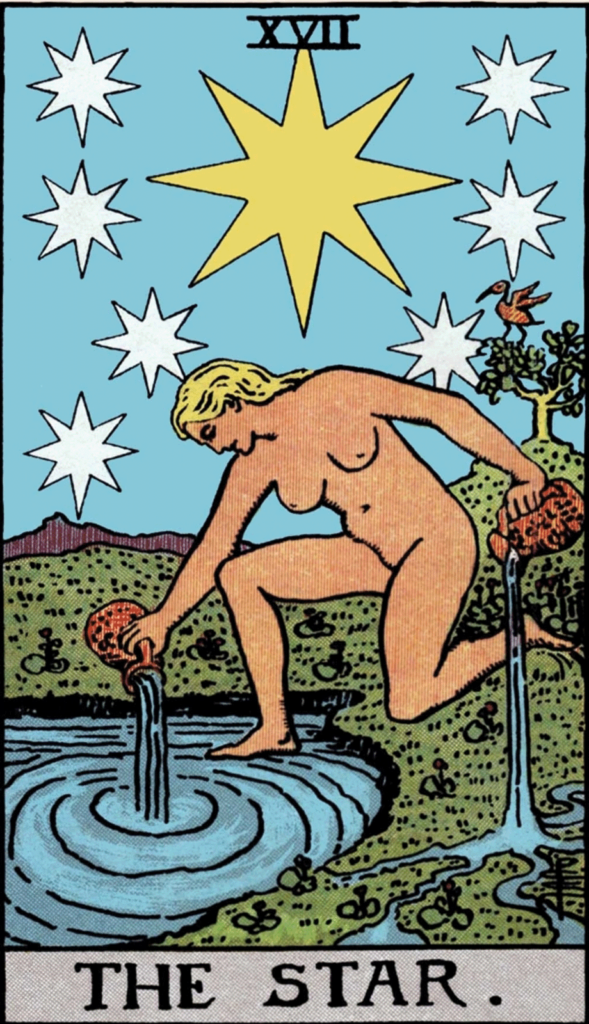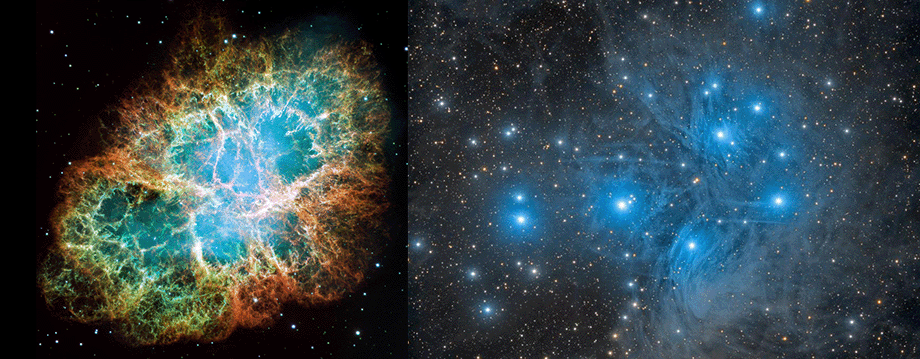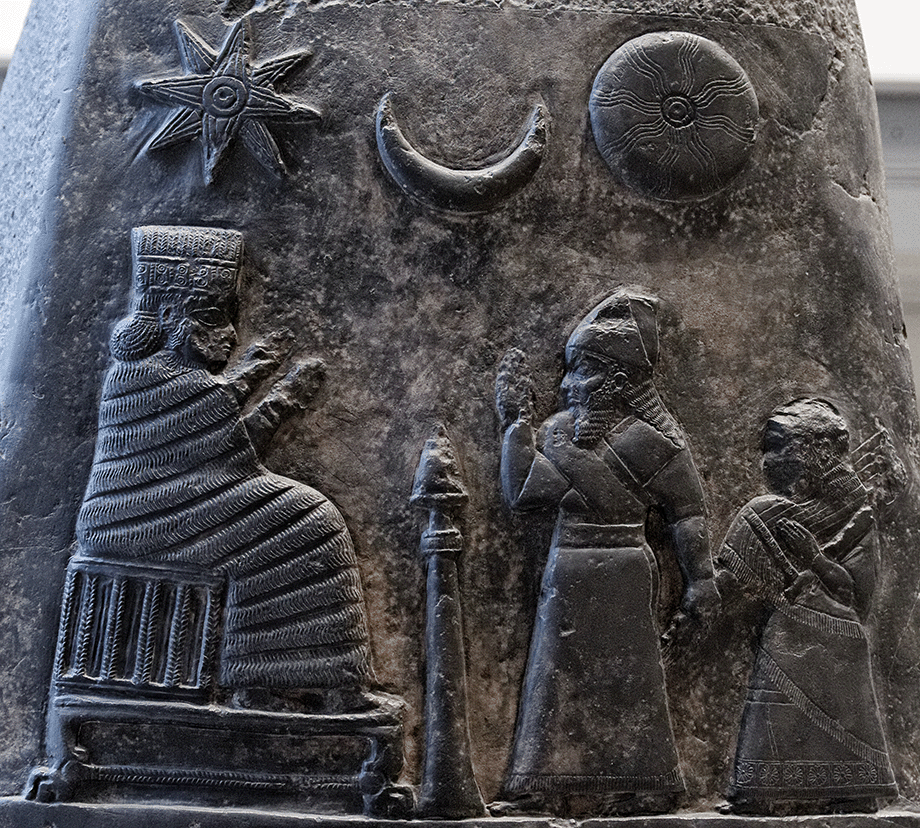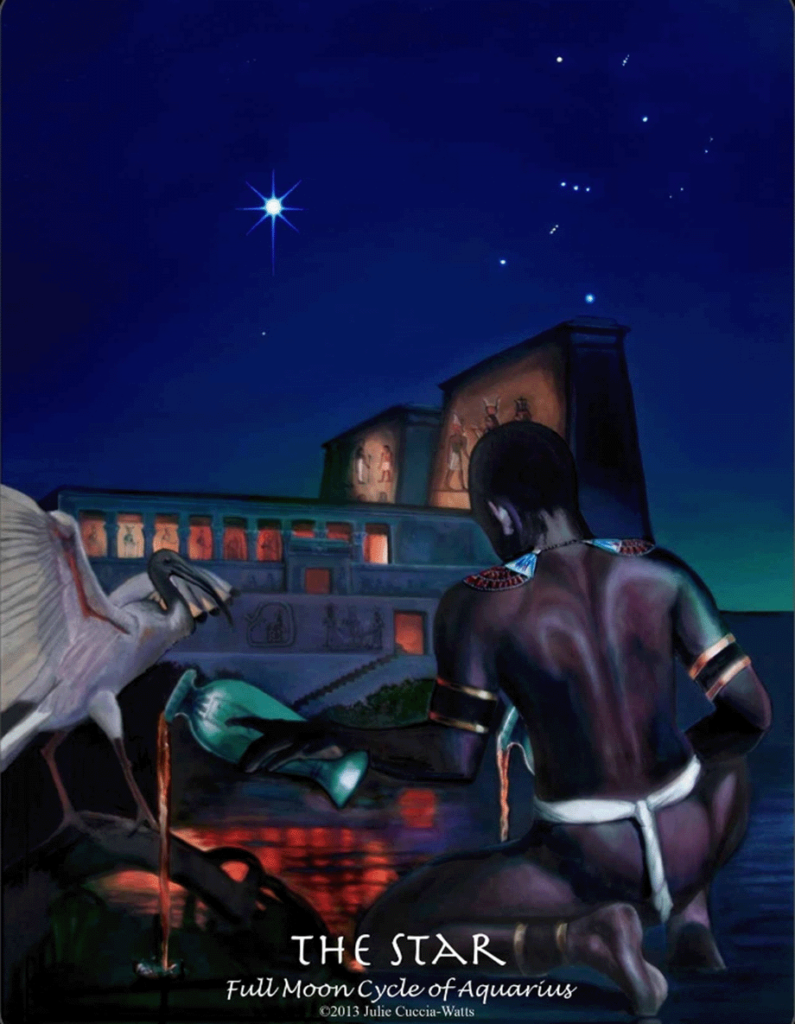Starlight
Traditional
Star Bright
First Star
I see tonight
Wish I may
Wish I might
Have the wish
I wish tonight.
This old rhyming spell came to my dream soaked brain in the wee hours this morning as I started thinking about my approach to this week’s card. While the interwebs call it a “19th Century American nursery rhyme” it is undoubtedly a rhyming spell, as many nursery rhymes are. It may as easily be phrased “O, Great Inanna, I beseech thee grant me this boon!”, because that is essentially what it says. It is calling upon the Evening Star to grant a wish, and the Evening Star is Venus, whom the Sumerians called Inanna. Venus is her Roman name, but among others she goes by Aphrodite, Ishtar, Astarte, and possibly even Freya. Venus is both the Evening Star and the Morning Star, depending on the time of the year. She is that “first star I see tonight” in the winter months in the Northern Hemisphere, where the ancients proclaimed her “The Queen of Heaven”. Inanna was part of a triumvirate of sky deities for the Sumerians, which are frequently represented together on various cylinder seals and other relics. They are the Sun, the Moon, and the Star, which are not perhaps entirely coincidentally the “celestial” cards we find as we approach the end of the Major Arcana.
The imagery of Card XVII – The Star poses several conundrums to the seeker of it’s origins. My various interpretations here are derived largely from my own speculation and not the traditional meanings. The internet offers a number of readings of these same symbols which, to my mind, are equally speculative, and potentially easily dismissed.

The card shows a naked woman kneeling next to pool or inlet. Her right foot rests on the surface of the water. Her left leg is bent beneath her and rests on the land. She has a pitcher in each hand from which she pours water. From the right, the water is poured into the pool. From the left the water is poured onto the ground, where it runs away in five rivulets, one of which appears to touch the edge of the pool. There are seventeen small budding plants in the landscape (ten around the perimeter of the pool, and another seven clustered behind her left foot); the same as the numeral assigned to this trump. A small hill arises just behind her left arm, on which grows a small tree. On the tree sets a red bird. There is a mountain range in the far distance. In the blue sky behind her are seven small white stars, surrounding a large yellow central star. All the stars have eight points.
The parallels between this card and XIV – Temperance have not been lost on generations of Tarot readers and scholars. Rachel Pollack in her Seventy-Eight Degrees of Wisdom, says that the energies of Temperance are those released by the transformative experience of the preceding Death card, and are still structured and managed. With the Star, the more complete destruction present in the Tower leads to a more complete, untamed, and freely expressed energy. This, she says, can be seen by the need of Temperance to remain closed, and to control the flow of the water between the vessels. The Star, in her natural state, pours the water out freely, aware now that there is an infinite source.
I don’t fully agree with those interpretations, but I can see them as avenues to explore when a more obvious read is not forthcoming. It does get me thinking about the combinations of The Hanged Man – Death – Temperance and The Devil – The Tower – The Star in terms of how those sequences represent the process of overcoming a restrictive situation. Both the Hanged Man and the Devil signal imprisonment, a stifling, or enslavement to the wrong choices. Death and the Tower represent catastrophic events, sea changes in our lives or at very least our ways of thinking. And then Temperance and the Star can symbolize the resulting actions that are possible following those changes.
But that wasn’t my first intention when I went to Pollack. I was looking for a possible meaning for the seven stars.
Seven is a sacred number. Well, all numbers can be sacred depending on context, but “Lucky 7” is a frequently recurring motif in many cultures. We have sevens all around. We have seven days in a week. While the names in English derive from Norse Gods, the equivalent Latin precedents (that you run across in French and some of the other Romance tongues) refer to the ancient Chaldean “planets” that figure in astrology. These are, the Sun, the Moon, Mercury, Venus, Mars, Jupiter, and Saturn.
Prior to the advent of the optical telescope during the Renaissance, these bodies were the ones that could be seen “wandering” in the night skies over ancient Mesopotamia. While it’s possible that maybe, on very clear nights with no light pollution at all, the two larger gas giants of Uranus and Neptune might be visible, their extremely long periods probably prevented them from being recognized as moving objects against the background stars.
Modern astrology recognized (and retroactively connects) Uranus, Neptune, and Pluto, along with a number of dwarfs, asteroids, and other bodies in calculating natal charts and casting horoscopes. But up to the Middle Ages, seven was the limit, and so seven became an important number.

Now, the easiest thing to do here would be to say that the seven stars of the Star card represent the seven planets. It’s neat, ties us back to ancient astrology and tradition and puts us into a stream of Medieval thinking that seems to influence much of the early Tarot imagery.
But the problem then is to determine exactly what the big star in the middle is supposed to be. Why is it so special that it gets it’s own card? It can’t be the Sun, since the sun is just another Chaldean planet, and like the Moon get’s its own trump. So I went back to the old texts and find that The Sun, the Moon, and Venus are all revered in ancient Sumeria because they all were the brightest objects visible in the sky, If you’ve ever been lucky enough to see Venus rising before the dawn or just after sunset, you know this planet deserves their epithet of “Queen of Heaven”.
But of course, Venus is another planet, and so having it brightly at center of seven other possible planets just doesn’t work. If the smaller stars are supposed to be the ancient astrological planets, then the big one has to be something other than Venus. It has to be an exceptional phenomenon.
Now if we go looking about in the Medieval mind, there’s a ready made solution for that, and it’s the Star of Bethlehem. This is the great star that supposedly appeared over the birthplace of Jesus and foretold his coming to the Wise Men, and shown for several days and nights as a beacon to all who would come see the Christ Child.
Well, fair story, and considering the established Judeo-Christian bent that we know Waite put on the deck, it’s not too far-fetched to consider. But I tend to find it a bit dissatisfying with the naked water bearer, and the connection Star-Moon-Sun here in the trumps. I think these “celestial” cards are just that, aimed at expressing an astrological metaphor, possibly tied to the idea of cosmic order or cosmic control by a divine being. And I am looking at them in the context of their original use as playing cards, not any later assigned esoteric value. From a purely decorative sense, I don’t think we can look at this as the Star of Bethlehem, or as expressing any Chaldean oracle,

But there’s another very interesting possibility. In the year 1054, there was a supernova in Taurus in the region of the Plaiedes star cluster. It is supposed to have been bright enough to be observed in the daytime, and was visible for approximately two years.
One of the names give to the Plaiedes is the Seven Sisters. It’s seven brightest stars can be seen with the naked eye, absent modern light pollution, and a supernova visible in the daytime would certainly be spectacular at night. 1054 was just after the First Millennium. Then, as now, there was a lot of apocalyptic thinking, interpreting of prophecies, political and social unrest, and general fear in the popular imagination. Then – BOOM – a great bright star appears in the sky – much as the legendary Star of Bethlehem had been described. Surely this was a port of the Second Coming.
Four hundred or five hundred years on, the event would most likely have been relegated to a notation in ancient chronicles that probably were not read by the common person. Yet the impact of such an event might have led to an image of a bright giant star, in the vicinity of seven smaller stars, becoming something of a motif. Seven, after all was a lucky number. And that motif might then have been copied down into the early Tarocchi trumps without any realization of it’s origin.

Or not, of course. This is the issue when working with symbolic oracles. Do they mean what they appear to mean, or are they a stand-in for something else?
One online definition says the seven stars represent the seven chakras. While knowledge of the ideas of chakras had certainly made it to Victorian England via the Raj, and these concepts were probably known to Waite and Smith when composing the cards, it doesn’t adequately address the presence of the seven stars surrounding the larger central one that we see on earlier decks like the Marseilles, which certainly were composed without that awareness. As moderns we have the opportunity to see them as chakric symbols, and like the potential reading of the Star as emblem of Inanna and her descendant goddesses, seek meanings that go beyond those revealed in Waite, and other sources.
As reading is an intuitive, rather than extuitive process, it is our impressions of the images, and how our own minds associate them, that gives rise to the wide range of possible outcomes. And in the case of my sometimes overthinking brain, seeing significances in number, pattern, shape, etc. – even if unintended by the creator of the image – sends me in search of possible meanings. These deep rabbit holes span the interwebs and my own library of occult, history, mythology, and science texts. The amalgam of these researches lay in my subconscious as well as unconscious mind, so when a given card – say The Star, turns up in my reading, the triggers will pull at that special red thread, and drop all these possible options.
That has been the purpose of this exercise, to explore how my mind, after 50 years of working with the cards, and numerous decks, and a number of books (good and bad) on the subject, has arrived at what meaning I see when a card pops up. I hope that you continue to find value in these explorations, and that it leads you to “go off book” and seek your own answers. All are equally valid as they represent our subconscious arising in reaction to the visual image.
When next I write, we will see that next of the Chaldean luminaries, the Moon. As a natural contrary and creature of the night, I hold great respect and great affection for our lunar neighbor. As such, my take on the meanings and significance of this card are likely to vary greatly from the usual, but again, that is the whole point.
I hope you will join me next week and thank you for your continued attention.

